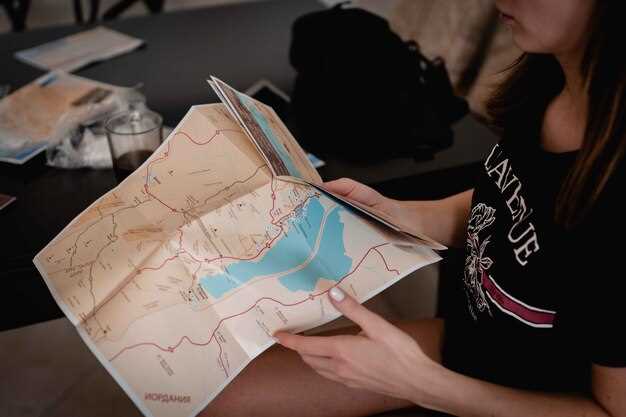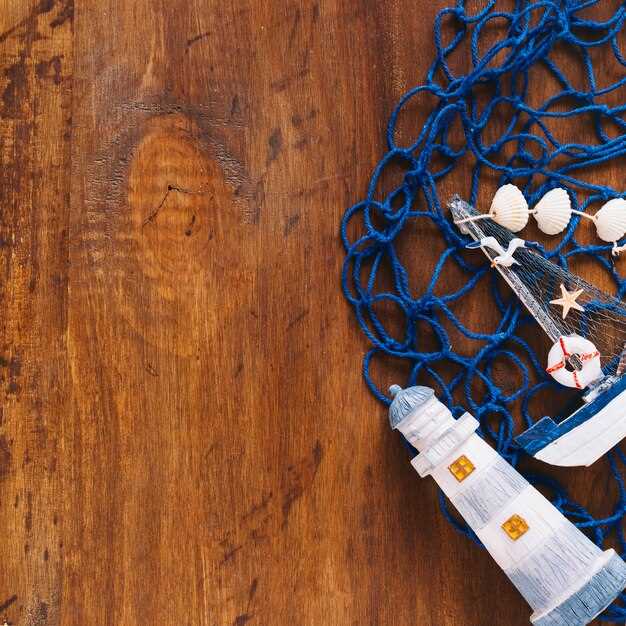Base Lipari as your hub and mount a compact loop through Vulcano, Panarea, Stromboli, Salina, Filicudi, and Alicudi if time allows. Start with provisioning in Lipari and carry the needed gear, then set the first leg to Vulcano (about 6–8 NM) with wind on the beam for a steady start. Keep a log backed by the harbor master to adjust the sequence if headwinds rise.
From Lipari, plan short hops: to Vulcano (6–8 NM), Panarea (4–8 NM), Stromboli (3–6 NM), Salina (8–12 NM). For longer legs, Filicudi and Alicudi lie roughly 25–30 NM west of Lipari. Anchorages along the south and east coasts protect against sirocco and offer quiet nights after exploring. If you crave a panoramic sunset, anchor near Cala Junco on Panarea or in the sheltered bays around Lipari for calm conditions.
Weather factors are highly variable, and you must read the conditions before each hop. Round a capo and headland, watching for the raya shoal west of Panarea. Winds shift with the season, and gusts can surge with the sirocco. Plan with a two-day margin for island-to-island legs, selecting anchorages with lee protection and ample depth for your vessel.
Educational resources help your crew stay sharp: carry english pilot books and up-to-date charts, compare them with digital overlays, and hold a pre-leg briefing. This approach supports ongoing education among your crew. The archipelago is nicknamed the jewel of the Tyrrhenian Sea by sailors, hence the emphasis on careful anchorages and shared educational experiences among crews. For scenic moments, joggers along the coastal paths liven the evenings near anchorages, while watching for schools of fish near Lipari’s southern eddies makes each stop feel productive. Use exploring as a mindset, and adjust your plan to keep the voyage safe and enjoyable.
Panarea to Salina: Practical Sailing Routes, Anchorages, and Harbor Tips
Begin at dawn from Panarea and sail a leeward course to Rinella, Salina. The hop covers roughly 10–12 NM and typically takes 2–3 hours in 18–22 kt trades. Keep a 165–185° true bearing to stay clear of Panarea’s exposed west coast and to ride a steady fetch. Thats a reliable plan for a comfortable crossing, with Panarea’s summit visible on the horizon and the archipelago unfolding to the east. You’ll found small coves along the coast that invite a quick photo pause, and you’ll learn how prickly flora and bold geology shape the coastline. (источник) unesco
Two practical options exist. The direct hop to Rinella saves time, while sailing along Salina’s east side offers protection from westerlies and easy access to Santa Marina di Salina for provisioning or a scenic break. If the wind shifts, drop into Cala Junco on Panarea for a quick look at the picturesque coastline before pushing on. The archipelago rewards patient planning with wonders that every crew member can enjoy, from cliff-top views to crater rims. europes best sailing can be found here, and the contrast between smooth seas and rugged lava rocks is beautiful.
Anchor options include Panarea’s Cala Junco for a sheltered night stop in 5–12 m, with good holding on sand and small gravels near the northern bluff. If space is tight at Rinella, anchor in the inner bay on a calm evening in 7–10 m, using a short scope and a stern line to keep the bow toward the shore. On Salina, Santa Marina di Salina offers protection behind the breakwater guests with select moorings; when crowded, anchor in 8–12 m off the east side, keeping well clear of ferry routes. Pollara Bay provides a dramatic daytime anchorage off the beach, but be mindful of wind shifts and surge near the narrow entrance, especially for larger vessels.
Harbor tips: contact local companies for berthing options and current slots; always check eruptions and volcanic alerts before approaching crater rims or crater-edge coves. The Aeolian Islands have unesco recognition for their unique geology, so follow local rules to protect sensitive habitats and abide by anchoring limits. For meals after sailing, seek a nearby restaurant to taste fresh seafood and regional specialties–Italy’s archipelago scenery is as much a culinary invitation as a nautical one. Planning your stopovers around calm mornings and late afternoons yields the most picturesque days, and you’ll keep the crew engaged with on-deck briefings about geology and local history. That combination makes the Panarea–Salina leg a rewarding chapter in your writing of the trip. europes side of sailing finds its best expression here, with a breeze that often shifts but remains predictable enough for steady hands on deck.
Best weather windows for Panarea–Salina crossing
Depart Panarea at first light on a calm day in late spring or early autumn; forecasts show 5–12 knots from NE to N and seas around 0.5–1.5 m, making the Panarea–Salina crossing a 45–60 minute ride. This window gives a smooth experience and a steady head into the wind.
During July–August, windows are shorter: mornings with 5–15 knots and seas under 1.5 m are common, but gusts can spike and wind directions may shift toward sirocco or mistral. Check maps and forecast updates, and if a stable 2–3 hour window appears, take it rather than risk late-day chop. Forecasts taken from local buoy data and coastal observations help you plan with safety in mind and promote a relaxed passage.
Plan with a guided skipper for local interpretation of conditions; keep safety gear ready, and file a simple plan with a mate or port authority. Stay connected on VHF, monitor winds and sea state, and note that forecast accuracy improves with frequent updates–taken decisions based on real-time data reduce risk across the islands, especially when links between Panarea and Salina are tight. This approach is also practical when navigating busy tourist periods throughout the season.
After the crossing, head into Salina to enjoy nature and the volcanic scenery; there are numerous activities and a convenient restaurant scene. The route brings you near vulcanos and other volcanoes that shape the archipelago, with prickly coastal flora characteristic of the trails. Maps and storico notes help you visualize the course taken, while local crews manage safety and logistics, allowing you to experience the islands with firsthand knowledge and a memorable, well‑planned itinerary.
Harbor entries and port calls: Panarea, Santa Marina Salina, and Lingua

Plan Panarea as your first stop to secure a berth and set a comfortable pace for the circuit. The harbor offers a protected main quay for small to midsize yachts, with depths around 3–5 m near the berthing area; entry from the east is simplest when winds come from the sea, while a leeward approach keeps you piercing less water on the bow. If the municipal quay fills, renting a mooring in Cala Junco or dropping anchor just outside the pier creates a quiet, otherworldly setting after a long day at sea, and it’s a useful option to save time.
Santa Marina Salina then becomes the next anchor, about eight miles from Panarea on typical itineraries and well suited for a midday stop. The harbor sits behind a sturdy breakwater; depths along the central quay run about 2–4 m, with deeper pockets toward the outer end. Tie up at the municipal pier or use a rented mooring if the wind shifts to a more offshore direction. In busy seasons, its program for berthing is straightforward–confirm ahead by radio or the harbor office to avoid delays, and consider a flexible schedule so you can raise your sails again at your preferred pace.
Lingua, at the island’s northern tip, provides a compact, protected option with a sandy beach nearby and a single pier suitable for visiting boats. Entry from the lee of Santa Marina Salina reduces fetch, and depths along the outer edge hover around 2–3 m. The Lingua berth is handy but limited, so plan to anchor just outside the rocky shore and use a tender to reach the quay if it’s full. This leg often feels otherworldly as the lava-dark coastline of nearby Stromboli glows at dawn, a sight that keeps the nautical mindset sharp and creative.
Between these ports, plan legs of roughly six to eight miles, which allows a pleasant daylight schedule and time to check provisioning, weather, and mooring options. The site you should rely on for up-to-date costs and restrictions is the local harbor authority–not a distant guidebook–so keep the following routine: check the latest notes, book berths when possible, and note any changes to fishing zones or formalities. Finally, if you’re exploring beyond the usual route, consider Hawaii-like calm moments in sheltered pockets to create a smooth progression back toward the mainland and a clean return to your original berth. Note that renting gear in Panarea can open up more flexible options for a longer stay, and the overall experience probably ships you a comfortable eight miles closer to discovery with each day on the water.
Anchorage and mooring options along the route
Base Lipari Harbor, Marina di Lipari, for a safe, sheltered first stop; you are within a hundred meters of the coastline and a short walk to the town, its churches, and shops.
From Lipari, plan the route to Vulcano, Panarea, Salina, Stromboli, Filicudi, and Alicudi. Many anchorages offer public moorings or private buoys; always confirm slots with the administers or a trusted skipper before you leave a harbour. Gior g i o, a private skipper, administers a small buoy field on Stromboli and can set up a quick, reliable tie‑up for travellers who want to visit the island’s launch points.
On the coast you find lush coastlines, isole clusters, and a mix of structures from old houses to modern facilities; the Seismic activity around active zones is monitored by certified scientists, who provide guidance during sensitive periods to keep the coastline safe for visitors and local structures.
Use Lipari as your base to explore the archipelago’s varied places: quiet bays, busy towns, and places to visit with a couple of hours’ tender ride. Along the route you’ll discover a broad range of private and public options that suit a hundred different itineraries, from calm summer nights to windy shoulder seasons.
| Island | Anchorage / Mooring Options | Depth & Protection | الملاحظات |
|---|---|---|---|
| Lipari | Marina di Lipari public moorings; Cala di Petrolo anchorage nearby | 5–12 m in inner harbor; lee from SW winds | Town access, churches, shops; good provisioning; tender to ferries readily available |
| Stromboli | Private buoys coordinated by local skipper; Giorgio administers a small buoy field | 7–25 m; seabed rocky with patchy mud | Private options reduce crowding; seismic awareness advised; access to launch points for ashore visits |
| Vulcano | Porto Levante buoy field; Porto Nuovo anchor zone | 6–15 m; protection from northerlies | Short tender to town; lush coastal paths; volcanic beaches nearby |
| Salina | Rinella and Santa Maria harbours; alternative anchor along the isole coastline | 8–18 m; protected from swell in calm conditions | Good provisioning; easy visit to Santa Maria and the crater lakes |
| San Pietro Bay buoy field; Cala Junco approaches | 6–12 m; sandy to rocky bottom in places | Busy in season; private moorings available; travellers often use these for easy shore access | |
| Filicudi | Capo Graziano anchorage; buoy field near Pecorini | 10–20 m; good protection from currents | Quiet, scenic coast; birds and coastal cliff views; visit the isole by tender |
| Alicudi | Porto area; remote anchorage along the western coast | 12–22 m; exposure to northerlies possible | Very quiet with limited services; plan provisioning ahead |
Navigation notes: depths, waypoints, and common hazards
Set your depth alarm to 5 m when approaching shorelines around Lipari, Vulcano, Panarea, and Stromboli, and keep 0.8–1.5 nautical miles off exposed reefs; verify readings with the charted banks before entering any harbour approaches.
- Depths and margins
- Outer channels between islands usually run 20–40 m deep, with gullies or ledges dipping to 8–15 m near rocky shores.
- Shore access zones and anchorages tend to 4–8 m in calm bays; beyond 1–2 cables, depths increase quickly to 12–25 m.
- Panarea and Stromboli approaches may show submerged banks that can surprise in clear water; cross-check depths on every mark and keep off shoals by at least 10–15 m until charted anchorage is reached.
- Waypoints and routing
- WP Lipari Entrance: approach from the NE with a steady 045° track, staying in 12–25 m until the first marked buoy line; use a 1–2 nm offshore buffer in swell.
- WP Panarea North Beacon: steer 060° along the channel, maintain 15–25 m, then turn to 030° for the inner reef fringe if you plan a landfall at Patitì or Cala Junco.
- WP Stromboli SW Approach: hold 20–30 m in the deeper trench, reduce to 12–20 m near the cliffs, and keep clear of the volcanic plume when it shifts onshore.
- WP Vulcano Porto: enter from the SE with depths 8–20 m; pick a berth in the outer harbour before moving to the inner quays if crowding occurs.
- WP Santa Marina Salina: follow the coast at 10–20 m, then shift to 6–12 m in the inner basin for anchorage if winds ease.
- Hazards and avoidance
- Seismic activity and gas plumes near Vulcano and Stromboli can alter conditions rapidly; monitor local notices and VHF channels (english-speaking stations provide updates).
- Shallow reefs and rocky outcrops lie close to shore in panoramas that are overlooking broad bays; read the scale of each mark and plan a wider berth in areas with submerged ledges.
- Frequent ferry and fishing traffic increases near harbour entries; maintain a safe speed and give wide berth while crossing lanes during daylight hours.
- Strong gusts and sudden squalls arise from the surrounding plains; position sails to depower quickly and trim sheets to keep your boat balanced.
- Rocky coastlines and landslides after seismic shocks produce floating debris; scan ahead and avoid channels with cloudy water or recent rockfall indicators.
- Wildlife such as herons roost along littoral zones; allow space for birds and small craft to pass without disrupting calm water near shorelines.
- Seasonal holiday crowds can fill popular anchorage areas; use early booking for harbour berths and plan alternates in quieter coves.
- Clear water hides underwater features; cross-check multiple sources and soundings before committing to a set course along any rocky margin.
- Wind changes driven by driving currents around the capital coastline can shift quickly; maintain a flexible sail plan and have a downstream exit ready.
As you prepare a cruise with a focus on safety, keep an eye on objective markers, stay attentive to chart updates, and balance planning with flexible execution. For planning, note how a well-timed booking aligns with holiday traffic, while a calm, aromatic morning gives you a clearer view of shallow banks and ledges. This approach helps sailors stay in control, whether you’re chatting with coastguard staff or coordinating a supper‑time return along this famed archipelago.
Provisioning, fuel, and onshore services for the Panarea–Salina leg

Top up diesel and water on Panarea before departure; arrange provisioning on Salina in Santa Maria or Rinella, where a small quay and tender-friendly access exist. At the Panarea side, the Bòttaro headland offers a sheltered approach for scheduled deliveries, so you can plan fuel calls with the operator and avoid busy times.
First, make a simple provisioning list: durable staples, fresh fruit, bread, dairy, and ice. If youre planning with a couple of crew, allocate a short shore visit so you can greet shop staff and fetch what you need. The island shops operate morning hours and stock basic things, with restocking taking place mid-morning or early afternoon.
Fuel and water specifics: Panarea lacks large-scale fuel docks; arrange a mobile tanker call via a local agent or plan a Lipari stop if you need a full tank. Confirm grade, quantity, and access window ahead of time, and ensure you have advanced arrangements for safe handling and transfer. Take notes on your intake so you dont run dry mid-leg.
Onshore services: water filling at the quay, ice, laundry, and showers are available at the Salina harbors; use the port office to arrange tender parking and waste disposal. On Salina you can also find a small bakery, a basic fish market, and a couple of cafés where you can greet locals and pick up fresh bread or coffee for the morning watch.
Crossing notes: the Panarea–Salina leg lies to the west and offers deep, relatively sheltered water; plan for about 10–20 nautical miles depending on wind, with a calm option if the trades favor you. Watch for pumice and shallow lava channels near the isole; keep a safe distance from coastlines, especially near Bòttaro and the raya zones, where currents can shift gear during early season transitions, just as the sun climbs over the peaks and paints the coast with dramatic, panoramic light.
Objective: keep provisioning tight and on schedule so your crew stays fed and alert for smooth handoffs at Santa Maria and Rinella. The route is blessed with beauty, and the views offer wonders and a witness to the islands’ simple, timeless rhythm. The statue near the quay marks a point you might take a note of, and the whole leg tells a story born from volcanic drama–lava, pumice, and creaky creeks–yet it remains easy to plan, with a couple of practical steps that keep things running well, including a quick stop at Bòttaro for fuel and a relaxed, panoramic pause to take in the islands’ deep blue.

